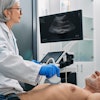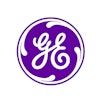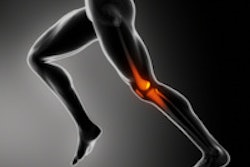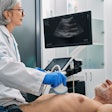Sunday, November 30 | 11:45 a.m.-11:55 a.m. | SSA21-07 | Room S405AB
Photoacoustic ultrasound thermography is a promising new technique for guiding and monitoring photothermal ablations for head and neck cancers, according to researchers from the University of Texas.Presenter Katherine Dextraze and colleagues benchmarked the technique against the clinically accepted approach, MR thermal imaging, by comparing images produced from both. Photoacoustic ultrasound images were taken using Fujifilm VisualSonics' Vevo Lazr small-animal imaging system, while MR thermal imaging was performed using GE Healthcare's Discovery MR750.
The researchers created a phantom to cross-validate the two techniques. They characterized photoacoustic ultrasound thermography for thermal therapy guidance and compared it with MR techniques and fluoroptic probe measurements.
The photoacoustic thermography technique measured temperature well in the range expected for ablation, from body temperature, 98.6° F, to cancer-cell killing temperatures of 131° to 140° F.
The technique also showed better spatial and temporal resolution than the MR thermography approach, suggesting that treatment would be more precise and, thus, spare healthy tissue, Dextraze's group concluded.




















